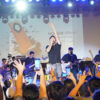Our Filipino Culture has a very distinct and rich heritage to bein with. The Cordillera Region to be example. It is known for it’s rich traditional culture and exquisite art and Ifugao’s epic stories that shape our Filipino History. Their culture leaves a mark in our Filipino trademark
For the first time in the Philippines, an impressive collection of traditional Cordillera pieces will be seen in public alongside artworks by 20th and 21st century Filipino Abstract Artist. It will exemplifies the richness of our tradition and ethnic diversification for the public to see.

JUXTA: POSITION ( The Aesthetics of Reduction) is a three-part book and will be made avilable to the public. In it, Kurer goes into greater detail on the aestheticism of the carvings of the Cordillera peoples, which he says can also be perceived and described utilizing an artistic vocabulary similar to the one of the Abstract Art movement. The second and the third highlight the bululs, boxes, kinahu and the spoon of Cordillera peoples mostly from the 17th century and earlier, and a number of abstract paintings from Filipino artist, as photographed by At Maculangan of Pioneer Studios, Manila.
Owned by Hong Kong-based AsianArt: Future(AA: F) which is chaired by Swiss Martin Kurer, some of the collection will be displayed at 1335 Mabini in Karrivin Plaza, Pasong Tamo Extension Makati, from February 16 to March 2, 2019.
Kurer said that he looks at the pieces of art from different backgrounds and periods, and attempt to search some aesthetic interaction or connection among them.

Similar exhibitions have been done before by the Museum of Modern Art, New York in 1988 and accompanied by William Rubin’s catalog ” The Primitivism of Modern Art “, and in 2009 at Fondation Beyeler in Riehen/Basel titled ” Visual Encounters, Africa, OCeanic, and Modern Art which showed tribal masterpieces alongside the works of Vincent Van Gogh, Paul Cezanne, Vassily Kandinsky, Rousseau, Constantine Brancusi, Henri Matisse, Piet Mondrian, Mark Rothko
Each BULUL , a box or bowl from AsianArt:Future’s collection, which was gathered from the old collection assembled in the last century will be displayed for public viewing. It will be showcased with the corresponding artwork from Filipino Abstract Artist and National Artist of the Philipines awardee Jose Joya; Filipino painter Federico Aguilar Alcuaz; Filipino National Artist in the Visual Arts H.R Ocampo;Lee Aguinaldo, Cesar Legaspi, Arturo Luz, Fernando Zobel, Lao Lianben, Gus Albor, who created a painting specifically for the exhibition.
Kurer invites the audience to look at the partnered pieces and perhaps sparks dialogue on the aesthetic vocabulary of the two genres of artistic creations which on the face of it, may not have much in common.
Yet through simplicity, directness, discipline, reduction of essence understatement, and the ability to show a hidden reality.
The exhibition and juxtaposition focus on the artistic implementation of the carver’s dealing with the spiritual world in their natural environment.
As a collector, Kurer remains fascinated by the fact that artist from different continents, with very distinct cultural heritages and from very different epochs, could end up employing – or be perceived to be employing a very similar aesthetics approach and furthering this dialogue is what he hopes for this exhibition will achieve.



























No Comments